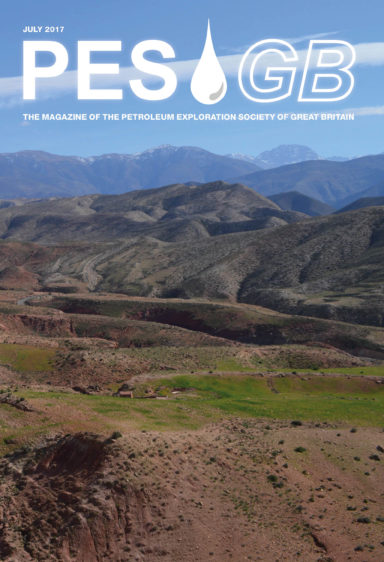PESGB July 2017
REVIEW: North Sea Petroleum Geology Course
REVIEW: Cleveland Basin Field Trip
REVIEW: North Somerset Field Trip
ARTICLE: The History of the Hash House Harriers
NEWS FEATURE: Hydrocarbon Potential of the Offshore Brasil License Round 2017
NEWS FEATURE: Implications of sand injectites for hydrocarbon exploration and production
NEWS FEATURE: Russia to deliver oil growth even under OPEC compliance
Plus much more inside
De-carbonisation & the changing future energy mix
 What has been happening to the outlook on global energy demand and how does it affect us and our Society? I should make the point here that these are my own personal views. This is a topic close to my heart and of course relevant to all of us.
What has been happening to the outlook on global energy demand and how does it affect us and our Society? I should make the point here that these are my own personal views. This is a topic close to my heart and of course relevant to all of us.
The evolving future energy landscape is one of our industry’s greatest long-term strategic challenges. The Paris climate change agreement has raised the global community’s commitment and momentum towards limiting global temperature change to 2°C above pre-industrial levels. Perhaps most significantly, China came to the table and agreed to work together with the rest of the world to prioritise de-carbonisation of our global economy. Trump’s confirmation last month that he intends to pull the US out of Paris will have limited impact on the rate of global de-carbonisation.
The push for global de-carbonisation is starting to impact our industry. Whilst climate change is nothing new to us (especially for geoscientists), Paris did mark an inflection point in the so called green revolution. Politics, environmental legislation and, now importantly, investor sentiment has subtly shifted calling into question the long-term sustainability of the petroleum industry and how petroleum products feature in the long-term energy mix. The key question for us as an industry is – how long is long?
Global energy intensity, and therefore carbon intensity, has peaked in recent years and is now reducing. Whilst global carbon emissions continue to grow, driven by developing countries use of coal, China is demonstrating how rapidly a developing country can reduce its energy intensity as its matures its economic focus from manufacturing towards services. China’s transition means that India is emerging as the leader in global energy demand growth. China will continue to dominate in terms of absolute demand but India’s economic focus on manufacturing will drive its energy demand growth, particularly in fossil fuels and therefore oil and gas.
The rise of the electric vehicle (EV) has been heralded in as one of the big disrupters. Oil currently dominates the transportation sector – so are the Teslas of this world, spurred on by clean air initiatives in China and other emerging markets, going to take a big piece out of global oil demand? The answer is yes, but not for a very long time. The fundamentals required to de-carbonise the transport sector are not here yet and won’t be for many years. Wood Mackenzie expects just 2 million barrels per day or 2% of global oil demand will be lost to EVs by 2035.
Well what about power generation then? The rise of renewables in the power sector has been phenomenal. Global energy supply from renewables is set to triple in the next 20 years. Most of this growth is down to wind and solar where cost deflation and government policy will attract material capital investment. Recently the UK, for the first time on a single day, generated over 50% of its energy requirements from renewables. Whilst this is an impressive growth trajectory, renewables will continue to be dwarfed by fossil fuels over this period. Significantly for us, natural gas is expected to overtake coal in terms of market share around 2030 with demand growth for gas exceeding 40% by 2035.
Total global energy demand is set to continue to rise, as increasing prosperity in developing economies lifts billions of people out of low incomes. Paris will provide downward pressure on this demand through energy efficiency and a focus on sustainability. However, whilst the energy mix will evolve as the world attempts to de-carbonise, our relentless demand for hydrocarbons to drive our economies through transportation, petrochemical feedstock and powering of our industries and homes remains robust well beyond 2035.
For the millennials in our industry, including university or high school students looking to enter the industry, there is no doubt in my mind that there are, and will be, long-term and exciting career opportunities in the oil and gas sector. This is why the role of the PESGB in supporting the industry and educating the public in the scientific and technical aspects of petroleum exploration is as important as it ever has been.


